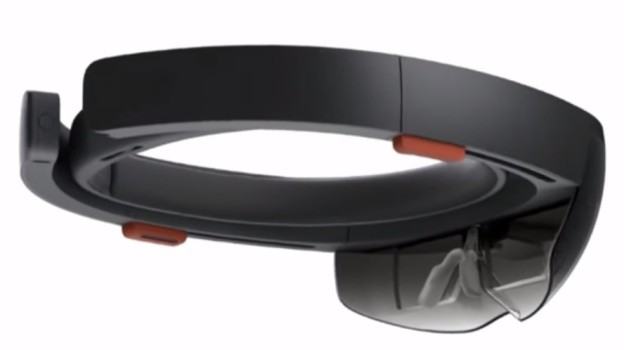Microsoft has unveiled a prototype of HoloLens, its most intriguing product in years, as part of a pre-launch of Windows 10.
HoloLens gives a new dimension to the ‘holographic method’ invented by Hungarian-British physicist Dennis Gabor, for which he was awarded the Nobel Prize in Physics in 1971.
It is a head-mounted holographic display with a built-in computer. The headset is bigger and more substantial than Google Glass, but far less boxy than Facebook’s Oculus Rift.

The device, which Microsoft plans to make accessible to developers this spring, seems similar to the goggles made by Google-backed augmented reality startup Magic Leap.
HoloLens has a depth camera with a field of vision that spans 120 by 120 degrees. The camera can sense what the user’s hands are doing even when they are stretched out.
Sensors send terabytes of data every second to an onboard central processing unit, a graphics processing unit and a holographic processing unit.
The device enables creation of realistic three-dimensional images or holograms by tricking the user’s brain into seeing light as matter. In order to create such images, light particles bounce around millions of times in the device’s light engine. The photons then enter the goggles’ two lenses, where they rebound between layers of multi colored glasses before they reach the back of the user’s eye.
“Holographic computing enabled by Windows 10 is here. HoloLens is real; it will be available during Windows 10’s lifetime,” Alex Kipman, Technical Fellow at Microsoft, said while unveiling the device at the Windows 10 pre-launch function at Microsoft headquarters at Seattle.
Images are displayed onto a rectangular box that appears in front of the user. Users can see reality beyond its borders using peripheral vision, thus helping users retain a sense of the real world around them. This is in fact an advantage the device has over the design of Oculus Rift where the user is effectively blind while using the headset. With HoloLens, the user can walk around, see things that surround him/her and move head while focusing in on the central display.
“You can look around the holograms. There is no lag. They look like digital objects and not photo-realistic but are incredible,” Dieter Bohn, one of a few who were walked through a live demo, told The Verge.
Luckily, there are no fancy control switches—the device is totally controlled by the user’s eyes, hands and voice. The device monitors the position of the users’ eyes and displays the cursor wherever they is looking. While voice commands are also integrated, users can “click” onscreen controls by holding a fist in front of their face, raising a finger vertically and then rolling it back down.
“When you think about technology today, it is behind the glass screen,” said Microsoft’s Kipman. “HoloLens unlocks the screen.”
In the demo video above, users were taught how to fix a drain pipe that appeared in front of them, by using a combination of a headset, augmented reality and Skype.
Microsoft has also teamed up with NASA to let scientists explore what Curiosity sees on Mars. The demo lit up a room and turned it into Mars and users walked around the rocky terrain, bumped into the Curiosity rover and closely saw the planet.
“This is the next PC,” said a Microsoft spokesman, indicating that Microsoft has significant plans for the device.
While consumers and developers will eventually decide whether HoloLens will become the virtual platform of choice, the device has demonstrated that Microsoft has finally decided to get into the game.
- Report: VR market to reach $38bil by 2026 - November 6, 2016
- Paint maker helps retailers design store layouts in VR - June 30, 2016
- VadR helps VR game developers add ads - June 20, 2016
